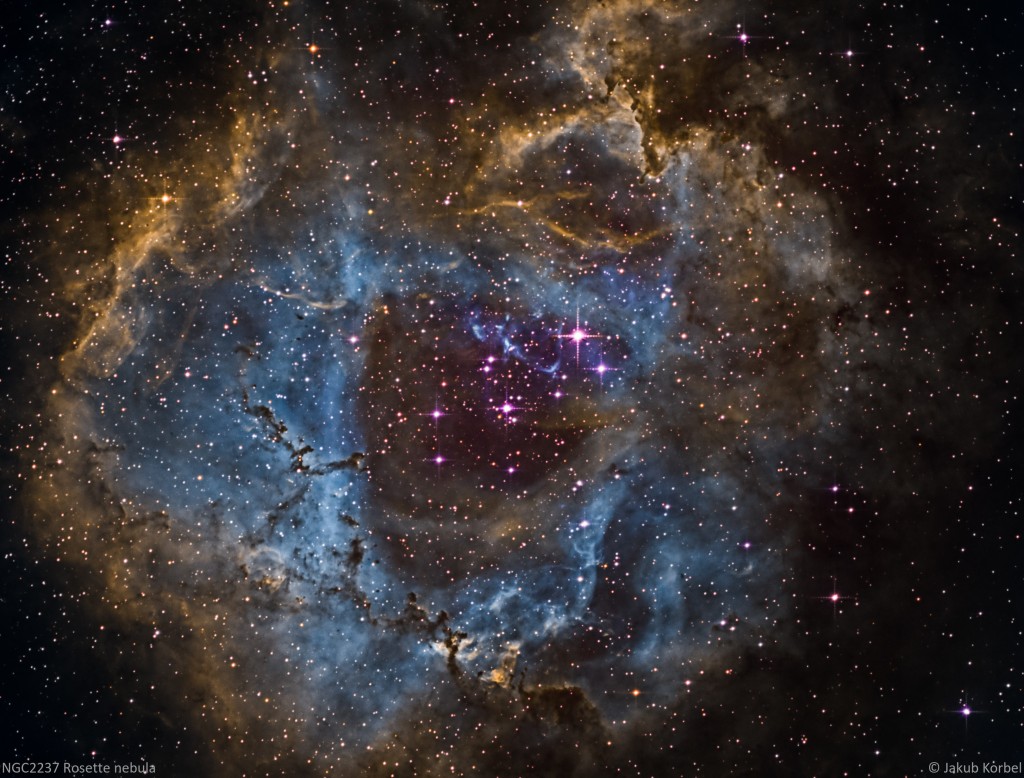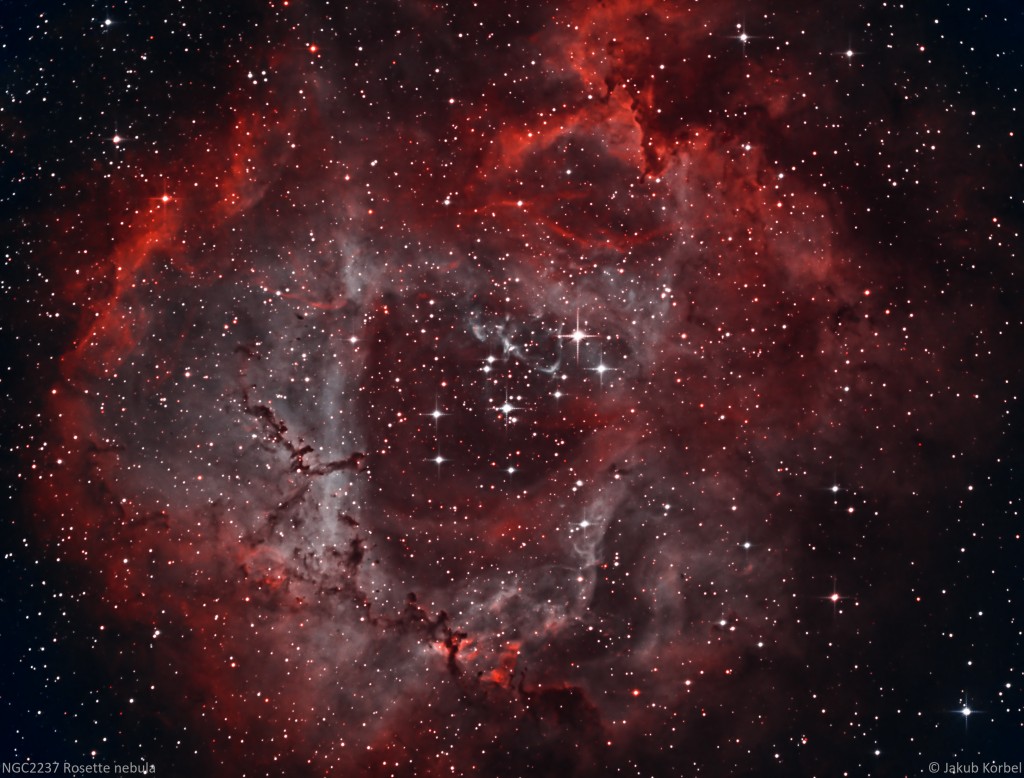Another place where the stars are born is called Rosette nebula. It is a cloud of hydrogen gas, located 5000 light years from Earth in constellation Monoceros (unicorn). The diameter of this nebula is 50 light years.
This time I processed collected data by two different ways. Basic data are three monochromatic pictures captured through narrow band filters: Hydrogen alpha, Oxygen OIII and Sulfur SII.
First technique is called Hubble pallet – natural color of H alpha is red, but it’s inserted into green channel, oxygen is blue, therefore ends in blue channel and sulfur is even more “red” than the red color, therefore lands in red channel. After many different post-processing steps the final picture looks like this:
Second technique is more realistic for the human eyes and brain, and requires pixel math. H alpha is red, SII even more, therefore the combination of this pictures (SII + 0.8*H alpha) will end up in red channel. Green channel is a combination of 0.075*H alpha + OIII. Finally blue channel is just OIII.
I am quite curious which picture you like more…
| Telescope: | Newton 254/1000 mm |
| Aperture: | 254 mm |
| Focal length: | 730 mm |
| Mount | Gemini G53f |
| Autoguiding | ZWO 174MM, TS 60/240 mm |
| Camera: | Moravian instruments G2 8300M @-40C |
| Corrector: | ASA 2" reducer 0.73 |
| Filters: | Baader Ha, OIII, SII |
| Exposure: | 17xHa, 19xOIII, 10xSII 360 s, bin 1x1, |
| Date: | 2016-01-17, 2016-01-26, 2016-02-10, |



[…] very large telescope with low magnification. It’s definitely easier to photograph the nebulosity. My previous photo was done through the narrow band filters, which suppress the light pollution and increases the […]